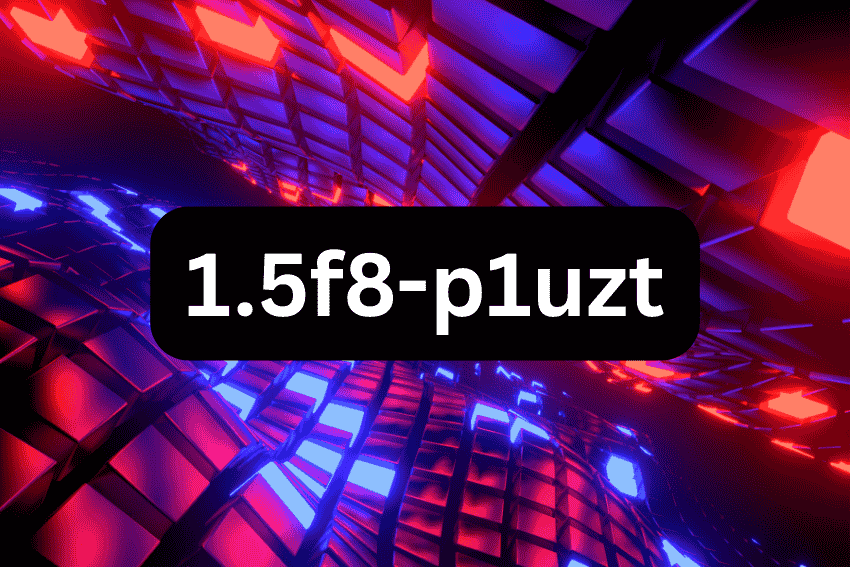Introduction to 1.5f8-p1uzt Texture
The 1.5f8-p1uzt texture is a unique and complex characteristic often observed in various material sciences and engineering disciplines. This texture is significant not only for its distinctive properties but also for its broad applicability across a myriad of industries, such as aerospace, automotive, and manufacturing. Understanding 1.5f8-p1uzt texture allows professionals to better assess materials’ performance, durability, and aesthetic qualities, making it a vital field of study for advancing technology and product development.
The term 1.5f8-p1uzt texture originates from a specific classification system used to describe textures in materials, particularly in relation to their microscopic structures. This nomenclature emerged from the need for a standardized way to communicate about textures observed in complex materials. As such, the 1.5f8-p1uzt designation serves as a reference point for scientists and engineers when discussing certain material properties and their implications.
<pinterestingly, 1.5f8-p1uzt=”” academic=”” an=”” and=”” as=”” automotive=”” by=”” can=”” continuously=”” deliver=”” efficiency=”” enhance=”” exercise.=”” exploration=”” features.<pin 1.5f8-p1uzt=”” a=”” across=”” addressing=”” and=”” applications=”” applications,=”” attributes,=”” benefits=”” can=”” challenges=”” conclusion,=”” contemporary=”” critical=”” deeper=”” delve=”” diverse=”” domains.
Characteristics and Applications of 1.5f8-p1uzt Texture
The 1.5f8-p1uzt texture is characterized by its unique physical properties that render it suitable for diverse applications across multiple fields. One of its most notable characteristics is its remarkable tensile strength, which allows it to withstand significant forces without compromising its structural integrity. Additionally, the 1.5f8-p1uzt texture exhibits excellent thermal stability, enabling it to maintain its properties under varying temperature conditions. This characteristic makes it particularly valuable in environments subject to thermal fluctuations or extremes.
Moreover, the 1.5f8-p1uzt texture demonstrates notable resistance to chemical degradation. This property ensures longevity and reliability in applications that involve exposure to aggressive environmental factors or reactive substances. The texture’s ability to repel moisture further extends its functionality, providing advantages in sectors like construction, where materials are often exposed to water and humidity.
In terms of applications, the versatility of the 1.5f8-p1uzt texture has led to its integration in materials science, where it is utilized in the development of advanced composites. For instance, the automotive industry employs this texture in the manufacturing of lightweight yet robust materials, enhancing fuel efficiency while maintaining safety standards. In fashion, its unique aesthetic properties are increasingly being recognized, prompting designers to incorporate it into various garments and accessories, where texture plays a crucial role in visual appeal and tactile experience.
Furthermore, case studies highlight its role in the production of high-performance sports equipment, showcasing how the reliable characteristics of the 1.5f8-p1uzt texture contribute to enhanced performance and durability. As research continues, it is likely that new applications for this innovative texture will emerge, affirming its significance across multiple industries.
The Science Behind 1.5f8-p1uzt Texture
The 1.5f8-p1uzt texture exhibits unique characteristics that are rooted in specific scientific principles. To understand this texture, one must first explore its molecular composition. The primary component of the 1.5f8-p1uzt texture is a complex arrangement of molecules that interact in distinct ways, allowing for the texture’s notable properties. This intricate molecular network is responsible for the texture’s overall stability and performance in various applications.
Structurally, the 1.5f8-p1uzt texture can be examined through a series of models that highlight its properties. A common theoretical model utilized in understanding such textures is the crystalline lattice structure. This model demonstrates how the arrangement of molecules within the texture leads to unique physical attributes, such as its strength and resilience. Notably, the arrangement and connectivity of these molecular units are what facilitate the behavior of the 1.5f8-p1uzt texture under different environmental conditions.
Furthermore, current studies suggest that the behavior of the 1.5f8-p1uzt texture can be explained through principles such as entropy and energy minimization. In essence, when external forces act upon the texture, the molecular structures tend to rearrange within the parameters set by these principles. This provides insight into the dynamic nature of the 1.5f8-p1uzt texture and its response to stress, temperature changes, and other factors, thus revealing the correlations between its structure and behavior.
Understanding the science behind the 1.5f8-p1uzt texture allows for improved applications in various fields ranging from materials science to engineering. The knowledge gained from studying its molecular composition and structural characteristics can provide a foundation for further research and development.
Future Trends and Innovations Related to 1.5f8-p1uzt Texture

The exploration of 1.5f8-p1uzt texture is on the cusp of significant advancements, driven by both technological innovation and evolving consumer preferences. As industries increasingly recognize the value of unique textural qualities, research is expanding to discover new characteristics and applications of this texture. Innovations in materials science, particularly concerning nanotechnology, promise the development of surfaces that exhibit enhanced durability and functional properties, expanding the potential uses of 1.5f8-p1uzt texture across multiple sectors.
One of the most promising areas of development is in the realm of smart materials, where the integration of 1.5f8-p1uzt texture could create surfaces that respond interactively to environmental stimuli. This could lead to the design of adaptive coatings capable of changing their appearance or properties, thereby catering to specific user needs. Furthermore, the incorporation of 1.5f8-p1uzt texture in smart textiles is gaining momentum, with application in wearables that enhance comfort while providing essential data through embedded sensors.
Consumer preferences also play a significant role in shaping the trajectory of 1.5f8-p1uzt texture innovations. As sustainability becomes a decisive factor in purchasing decisions, industries are pivoting towards eco-friendly alternatives that utilize this texture, exploring biodegradable materials that still provide the desired tactile characteristics. The rise of personalized products has led to a demand for unique textures, pushing brands to experiment with 1.5f8-p1uzt texture in customized design solutions.
In conclusion, the future of 1.5f8-p1uzt texture is poised to impact a variety of industries significantly. Advancements in technology will undoubtedly lead to new applications and modifications, while changing consumer expectations will necessitate a re-evaluation of how these textures are incorporated into products. As these trends unfold, stakeholders must remain attuned to the innovations that will define the next generation of materials emphasizing the importance and versatility of 1.5f8-p1uzt texture.


